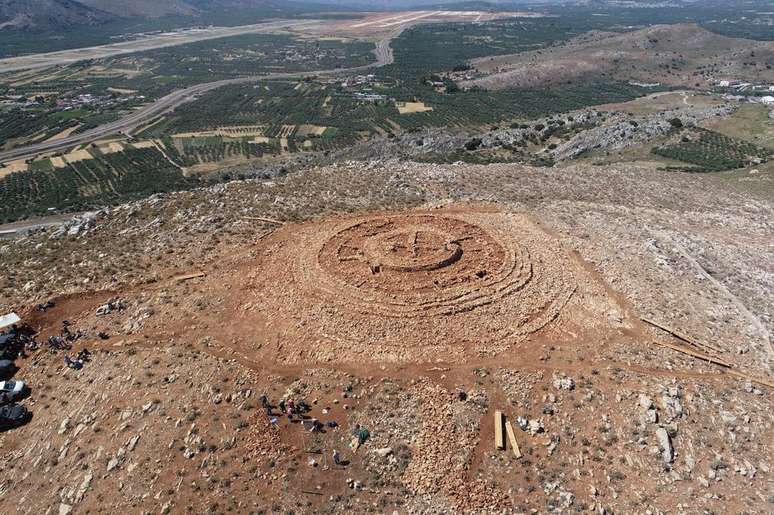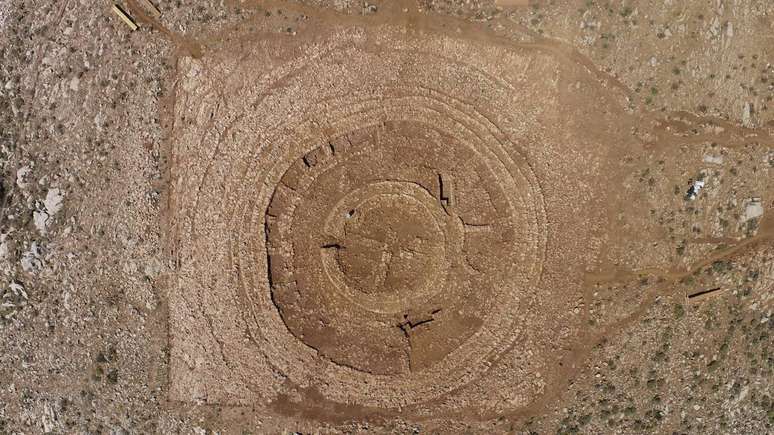Greek archaeologists found a strange circular building atop a hill on the island of Crete; the site was perhaps used in religious rites
Archaeologists discovered a mysterious circular construction on the top of a hill in island of Crete, in Greece. The ring-shaped stone monument was built 4,000 years ago, during the Bronze Age. With shapes reminiscent of a labyrinth, the function of the structure is still a mystery.
- Unprecedented mysterious monument found in France
- Secret L-shaped chamber found at the foot of the Pyramids of Giza
The mysterious circular structure was found during construction work on an airport in this city. region of Greece. Radar would have been installed on top of the mountain, but the work has been suspended indefinitely.
“This is a unique and very interesting find,” the Greek Ministry of Culture said in a statement. Given the importance of this new historical heritage, the works will be relocated and excavations will be carried out on the site.
Mysterious building in Crete
Circular in shape, the architectural complex has a diameter of 48 m and extends over a total area of 1,800 m², starting from the highest point of this hill on the island of Crete.

The mysterious construction is made up of 8 overlapping stone rings, with an average thickness of 1.4 m. In the center of a circular Greek building is a prominent circle, with an external diameter of 15 m. In the internal part the diameter is 9 m. This internal portion is still divided into 4 quadrants.
The team doesn’t yet know how to predict the height of the walls, but what intrigued the group of paleontologists is the almost labyrinthine structure that becomes more and more visible as the excavation proceeds. The spaces communicate with each other through narrow openings.
The estimate is that the monument was built between 2,000 and 1,700 BC, based on the analysis of the ceramic remains found. This characterizes the work as belonging to the ancient Minoan civilization.
Function of the Greek circular structure
The excavations and investigations are far from being concluded, but scholars debate what the use of the circular construction, built by Minoan culture. The main hypothesis is that it was a place of rituals.
The site “may have been used periodically, perhaps in ritual ceremonies, involving the consumption of food, wine and, perhaps, offerings,” the ministry suggests. The idea gains strength from the large quantity of animal bones found inside.
“It is the first monument of its kind identified and excavated in Crete. Its size, architectural structure and meticulous construction required considerable work, specialized expertise and a strong central administration, which organized its construction,” adds the Note.
Source: Greek Ministry of Culture
Trends on Canaltech:
- Samsung Q600C Review | A soundbar with an excellent quality/price ratio
- The astronaut publishes the photo of Sao Paulo seen from the International Space Station
- The 50 funniest Google Assistant jokes
- The JBL box survives after 25 days under the mud in RS
- ChatGPT down? AI chatbot has problems this Monday (17)
- The 5 strongest car engines in the world
Source: Terra
Rose James is a Gossipify movie and series reviewer known for her in-depth analysis and unique perspective on the latest releases. With a background in film studies, she provides engaging and informative reviews, and keeps readers up to date with industry trends and emerging talents.







